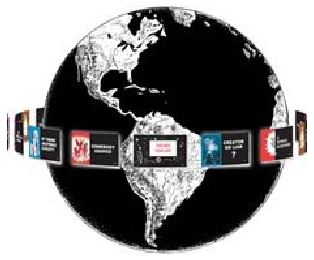New Gospel of Judas Fails Basic Bible Test
Over the years, many "gospels" have been dug up by diligent researchers. They have found a gospel of Thomas, one of Mary Magdalene, another of Phillip. The latest is the Gospel of Judas, presented to us recently by the National Geographic Society.
It is a copy, dated about 300 years after Christ. Scholars estimate that the original was written about a hundred years earlier. Some claim that it is the most significant archeological find in the last 60 years.
The text tries to show a very different view of the relationship between Jesus and Judas Iscariot. He was not the betrayer of the Savior, but a collaborator in a plot to free the inner spirit of Jesus that was trapped in an earthly body. Students of early church history recognize this as the error of Gnosticism.
This new "gospel" is valuable, not because it carries more truth about Jesus, but because it sheds more light on how the Gnostics had perverted the true gospel. It clearly shows their mystical beliefs that one can attain secret knowledge (gnosis) of the spirit realm and thus attain "heaven."
The Gospel of Judas is one of a group of manuscripts found in Egypt where the Gnostics were located and where biblical truth became mixed with prevailing pagan philosophies. Tinges of these pagan philosophies can be found in the Alexandrian manuscripts used to support the modern versions of the Bible.
A study of the language describing Jesus in the modern Bible versions shows how, in many instances, His divinity or Messiahship is omitted. (See page 66 of Chick Salliby's If The Foundations Be Destroyed and Chapter 7 of Final Authority by William P. Grady.)
Besides this obvious pollution of the text, the Gospel of Judas fails another test for an authentic gospel: It was written much later, after the eyewitnesses to Jesus were gone. The four gospels in the Bible were all written by men who lived with Jesus. Then they were peer reviewed by others who had personally followed Jesus.
When this basic test is applied to manuscripts that show up years later, they all fail. In any court, eyewitnesses are always given the most credibility. Any other testimony is hearsay, relayed from one person to another and not considered as reliable.
Thus, the Gospel of Judas fails two tests: it disagrees with the eyewitnesses that walked and talked with Jesus, and it comes from a stream of history that we know was polluted with heresy.
David Daniels, in his book Did the Catholic Church Give Us the Bible?, describes in detail the two streams of Bible history. In one, the writings of the apostles traveled into Alexandria, Egypt where the pagan philosophers polluted them. Ultimately these distorted manuscripts arrived in Rome where they became the basis for modern Bible versions.
The other stream of manuscripts flowed up from Jerusalem into Antioch and out through central Europe into Britain where they formed the basis of the King James Bible. Daniels shows how the northern stream meticulously protected the purity of the originals, giving us thousands of manuscripts that all agree.
Today, the polluted stream continues to feed the skepticism of modern scholars desperately looking for ways to justify their rejection of Jesus as the resurrected Son of God. The Gospel of Judas only adds to the evidence that only the KJV is covered in the promise that God would preserve His Words. (See Psalms 12: 6-7 and Matthew 24:35.)
- See more articles on related topics:
- Bible Versions
- False Religions
- Two Types of Bible Versions
- History of Preservation
Other Articles from May/June 2006:
- Legislature Caves In on Parental Rights
- New Evidence for Human Evolution?
- A Message From Jack Chick
- 'Lady of Light' Exposed as Usurper in New Book
- Chick Mail Bag May-2006
- New Tract Line with Black Characters
- Why Not a Daddy and Two Mommies?
- Prison Ministry Letters: May-2006
- Are Some Roman Catholics Saved?
- Tract Passing Tips - May 2006
- Tracts in 12 Languages Ready for World Cup Games
More on Bible Versions:
Products of Interest:
-

Babylon Religion
224 pages
Learn how a Babylonian goddess became the Virgin Mary. An easy-to-read history of Catholicism's Babylonian origin. -

Did the Catholic Church Give Us the Bible?
208 pages
The Bible has two histories. One is of God preserving His words through His people. The other is of the devil using Roman Catholic "scholars" to pervert God’s words and give us corrupt modern Bibles. -

If The Foundations Be Destroyed
98 pages
What does the NIV have against Jesus? Is your Bible missing important verses and doctrines? If it is an New International Version there's a lot missing!



